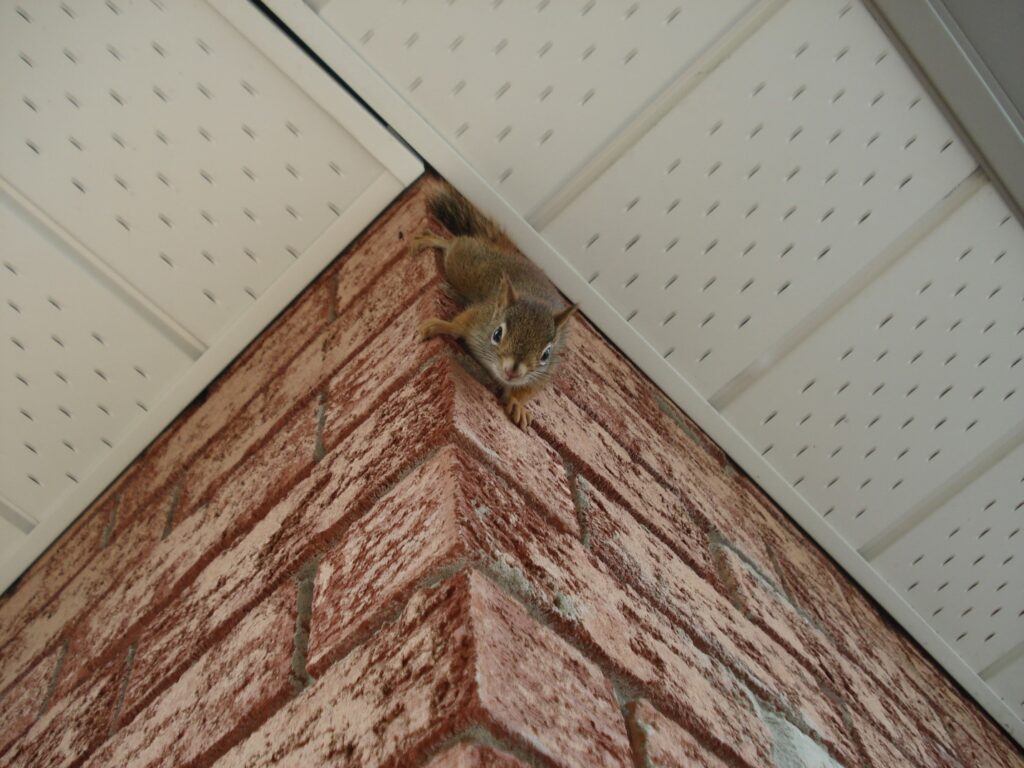Relocating animals is a common and misguided method for dealing with nuisance wildlife. The practice was once widely used by both homeowners and animal control professionals. It was once seen as a humane alternative to killing wildlife but in recent years research has shown that relocating wildlife can harm wildlife, spread disease and unbalance populations.

A litter of raccoon babies stashed away inside an attic.
Before setting any traps make sure to assess any by-laws related to wildlife trapping. There’s usually a better way to get rid of wildlife without doing them harm. Bottom line, animals relocated to unfamiliar surroundings are not better off.
It’s an unfamiliar area
Lots of different urban wildlife species only live within a small home range. They’ll have several dens or nests and rotate where they spend time depending on access to food, time of year and other considerations. This is all they know.
Moving them to a new area means they’ll have to start from scratch. They could struggle to find food. Wildlife won’t know where good food sources are. Also, they don’t know safe spots to hide. There could be different types of predators they’re unaware of. Animals need a lot of different things to survive. An unfamiliar area could make retaining those necessities very difficult. For example, a raccoon from the city that is used to raiding garbage bins will struggle find food if released in countryside where discarded food isn’t available.
Beyond found sources, relocated animals must also compete for den sites. The amount and types of den sites available to urban wildlife are different from those found in woodlands. Relocated wildlife, especially juveniles, often struggle to carve out new territories. This could result in turf wars with incumbent wildlife already living in the area.
With a resurgence of rabies in southern Ontario, most notably Hamilton, Burlington and the Niagara Region, disease containment has become increasingly important. One of the ways in which diseases like rabies can spread is through the trapping and relocating of sick animals to areas that were previously rabies free.

A red squirrel clinging to a brick wall
Mothers could be separated from babies.
Trapping can break-up families. Most wildlife problems occur during spring and summer when female animals are nesting and raising babies. Baby squirrels, raccoons and skunks are dependent on their mothers for weeks and months after birth.
It’s not uncommon for homeowners living with raccoons inside their attic to set a trap. It’s not until a day or two after the mother has been relocated that they hear the sound of crying coming from inside the attic.
The babies have been orphaned by someone who just didn’t know it has baby season. Likely the young will die. They won’t receive the necessary meals to grow. They won’t know how to forage to find their own food. Sometimes they might not even know how to get out of the attic. Starving baby animals to death is not only inhumane, it can also cause incredible odor and sanitation problems.
Also, it leaves the babies vulnerable to predators. The mother is not there to protect them. Defenseless youth is the easiest meal another animal could ask for.
Wildlife could be injured while travelling
Once trapped wildlife will do anything to try and get out. Sometimes they’ll be successful, but other times they will injure themselves. Animals that are relocated to areas far from food and shelter will travel great distances to find the resources they need. Very often this means crossing major traffic arteries and being struck by a vehicle.


